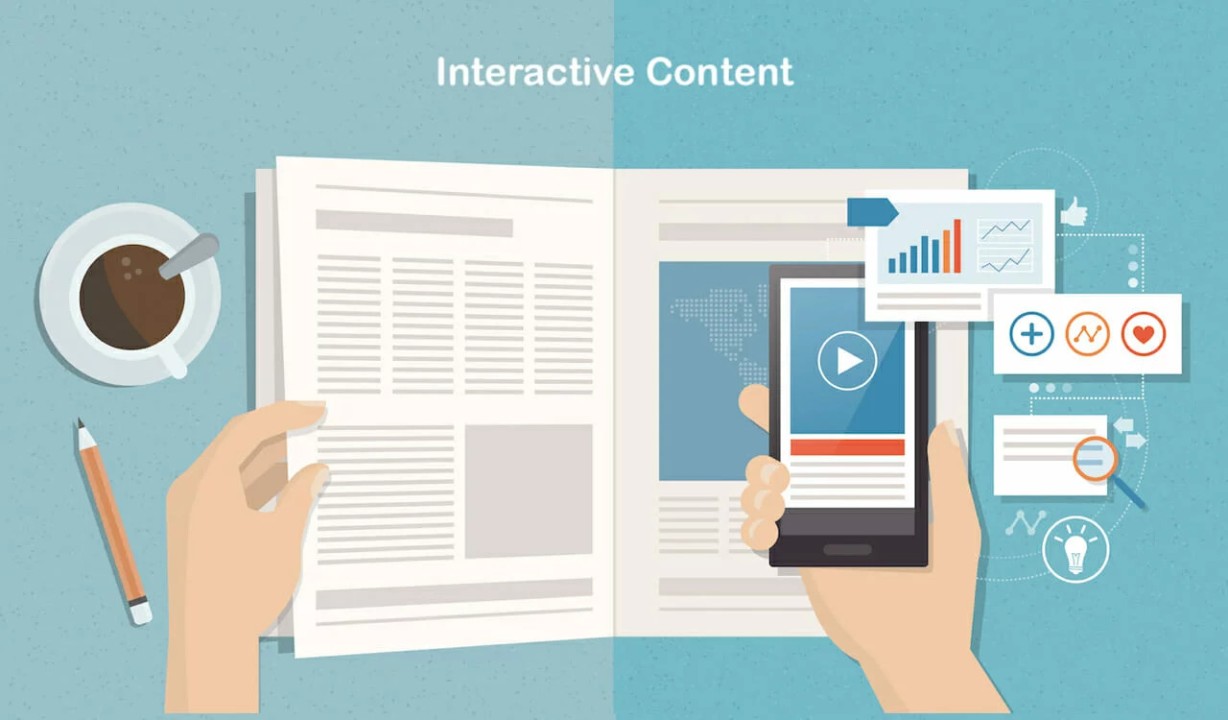
Interactive Content: Engaging Users and Boosting Conversions
Sharad Koche
Group Director Endeavour Group Of Companies | Author | Transforming Lives Through Leadership & Community Service #Marketing #Sales #Leadership #Innovation #Growth #Author
Introduction:
In today's digital landscape, where attention spans are shrinking and competition for user engagement is fierce, businesses must find innovative ways to captivate their audience. One such approach is interactive content, a dynamic and engaging form of media that encourages user participation and drives conversions. From quizzes and polls to augmented reality experiences, interactive content has proven to be a game-changer in the marketing world. In this article, we will explore the power of interactive content and delve into real-life examples of how it can effectively engage users and boost conversions.
1. The Rise of Interactive Content:
Traditional static content often fails to stand out in the sea of information overload. Users are more likely to scroll past lengthy articles or static images without paying much attention. This is where interactive content comes into play. It disrupts the passive consumption pattern by requiring users to actively engage and interact with the content, making it an effective tool for capturing attention and increasing conversions.
2. Examples of Interactive Content:
a. Interactive Infographics:
Infographics are a popular way to present complex information in a visually appealing manner. By adding interactivity to infographics, users can explore different data points, hover over elements for additional details, and even interact with charts and graphs. This not only enhances user engagement but also provides a personalized experience. For example, a healthcare company could create an interactive infographic that allows users to input their age and receive personalized health tips based on their demographic.
b. Quizzes and Assessments:
Quizzes and assessments are interactive content formats that can be highly engaging. They not only entertain users but also provide valuable insights or recommendations based on their responses. For instance, an e-commerce company could create a quiz to help users find their perfect skincare routine, recommending specific products based on their skin type and concerns. This interactive approach not only educates users but also increases the likelihood of conversion as they become more informed about the products.
c. Augmented Reality (AR) Experiences:
AR has gained significant popularity in recent years, allowing users to interact with virtual elements in the real world. Brands are leveraging AR to create immersive experiences that drive engagement and boost conversions. For example, a furniture retailer could develop an AR app that enables users to visualize how a particular piece of furniture would look in their living room. By bridging the gap between imagination and reality, AR experiences create a strong emotional connection with users, increasing the chances of a purchase.
d. Interactive Videos:
Videos are already a powerful tool for storytelling, but adding interactivity takes them to the next level. Interactive videos allow users to make choices within the narrative, shaping the outcome and creating a personalized experience. This not only keeps users engaged but also increases their investment in the content. For instance, a travel company could create an interactive video where users can choose their preferred destinations, activities, and accommodations, resulting in a personalized travel itinerary. By immersing users in the decision-making process, interactive videos enhance conversions and provide a memorable experience.
3. Benefits of Interactive Content:
领英推荐
a. Increased Engagement:
Interactive content encourages active participation, capturing users' attention and keeping them engaged for longer periods. By providing an interactive experience, brands can create a two-way communication channel with their audience, leading to increased brand recall and a higher likelihood of conversions.
b. Enhanced Personalization:
Interactive content allows for customization and personalization, making users feel seen and heard. By tailoring the content to their preferences and needs, brands can build stronger connections with their audience. This personal touch increases user satisfaction and fosters brand loyalty, resulting in higher conversion rates.
c. Valuable Data Collection:
Interactive content provides an opportunity for brands to collect valuable data about their audience. By analyzing user interactions and responses, companies can gain insights into user preferences,
?pain points, and behaviors. This data can then be used to refine marketing strategies, develop targeted campaigns, and improve overall user experience.
Conclusion:
Interactive content has emerged as a powerful tool for engaging users and boosting conversions in today's competitive digital landscape. From interactive infographics to quizzes, augmented reality experiences, and interactive videos, brands have various options to captivate their audience and provide personalized experiences. By incorporating interactive content into their marketing strategies, businesses can increase user engagement, drive conversions, and build lasting connections with their target audience. Embracing the interactive content revolution is a game-changer for brands seeking to stand out and succeed in the digital age.
#InteractiveContent #UserEngagement #BoostConversions #DigitalMarketing #ContentStrategy #EngagingAudience #InteractiveInfographics #QuizzesAndAssessments #AugmentedReality #ARExperiences #InteractiveVideos #Personalization #DataCollection #DigitalLandscape #MarketingStrategies
Alvin Foo Prakash G Aditi Sharma Akshay Gadkari Amit Jain Dr. Ananta Singh Raghuvanshi Ambit Private Limited Arun Balasubramanian Atyeti Inc Ajmera Realty & Infra India Ltd. Symbiosis College of Arts & Commerce 美国德克萨斯A&M大学 ACCA